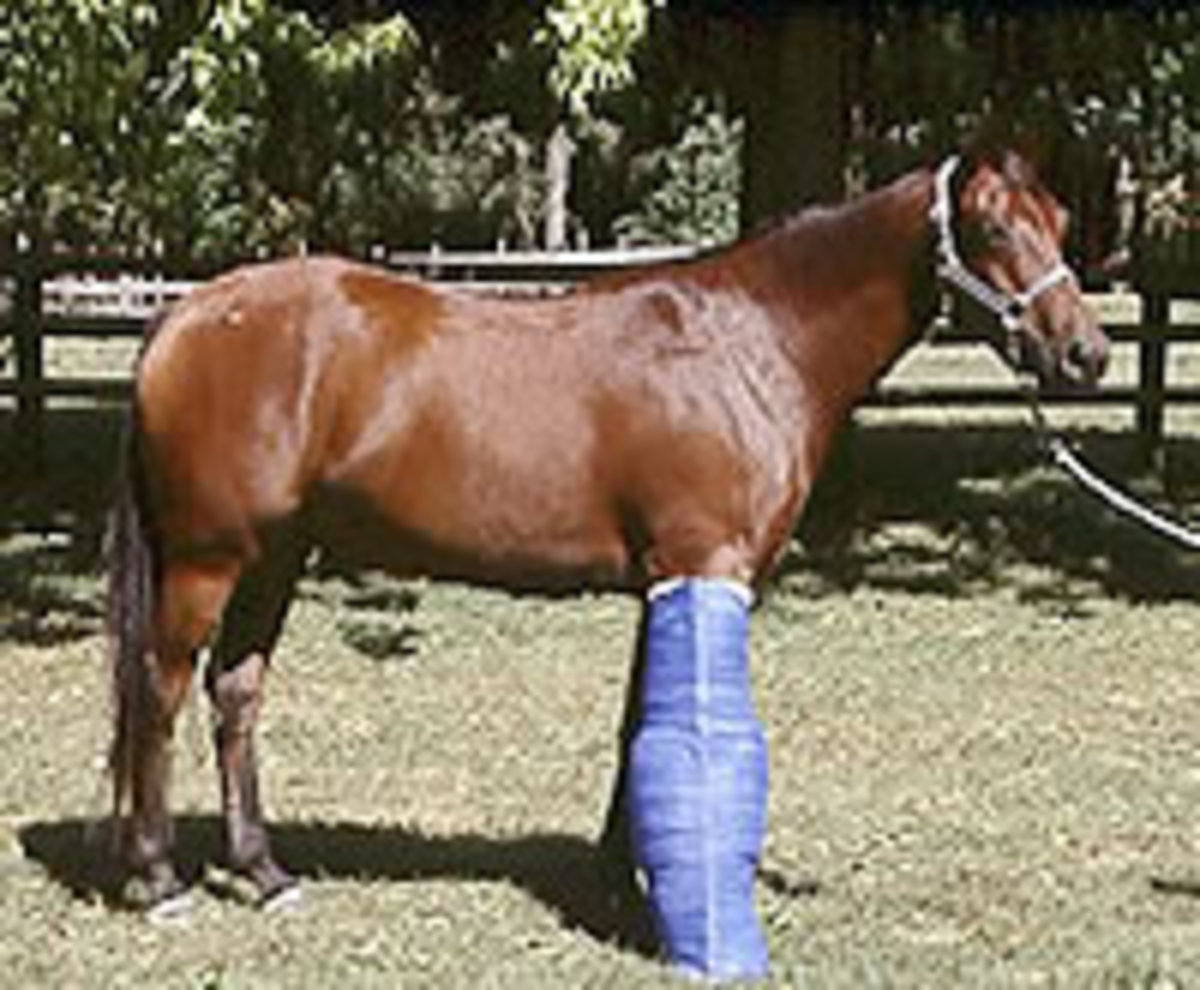
Bones are almost as vital as skin and muscle. They are way ahead of the body’s sinewy connectors and cartilage coverings when it comes to regeneration and repairs. If your horse tears a suspensory ligament, healing takes forever (or so those months and months may seem), and even then, the replacement parts are never as good as the original tissue. If he loses a piece of cartilage from a joint surface, the loss is for life.
But if he breaks a bone and the veterinary surgeon who tends to it does his job, the repairs are well under way within a couple weeks. And when the remodeling is finished after several months, the patch is not at all apparent and not one whit weaker than the original material. In other words, bone is so far from being dry and dead that, given the appropriate conditions, it heals better than any other tissue in the body.
Of course, when we talk about horses and bones, it’s usually to discuss a fracture. And most broken legs involve the long bones, the primary weight bearers and locomotors. But their breakdowns are not due to inherent weakness of the substance itself. If you piled weights on one cubic inch of compact bone to test its compressive strength, you would have to heap 20,000 pounds–10 tons–on that tiny cube before it would go squash. That same chunk of bone has such tensile strength–the ability to withstand pulling forces–that you would be able to hang as much as 15,000 pounds from it without its pulling apart.
No, you can’t fault bone material itself for being weak and breakable, yet broken limbs happen to all species–even to horses, whose bones are among the hardest, most densely mineralized in the animal kingdom.
Breakdowns occur when bone experiences forces applied at unnatural rates (a car bumper going 30 miles per hour, for example), from unpredictable directions (a twist of the foot on a cuppy track, for instance) or uncommon magnitude (heavy rafters collapsing on a horse’s hindquarters, perhaps). Sometimes limbs break because of sudden events; sometimes they are weakened by overwork without adequate intervals to rest and rebuild, causing them to fail during what would otherwise be normal use.
What’s more important than how bones break, however, is how they heal. Indeed, when fractures do occur they are met with amazing recuperative powers.
The constituents of bone impart both elasticity and rigidity to the skeletal framework. Protein (in the form of collagen) and water (included in lymph and blood) contribute resiliency and shock absorption. Mineral salts–primarily calcium, with a little magnesium and sodium sprinkled in–provide the stiffness. When the collagen matrix of a bone is removed, its shape remains the same, but its weight is reduced by one third and it becomes quite fragile, rather like a piece of blackboard chalk, which, in essence, it has become.

On the other hand, if a bone is stripped of its mineral components (decalcified), the remaining collagen matrix, constructed like loosely woven fabric, retains the bone’s original size and shape but is lighter by two thirds and soft and pliable, as incapable of bearing weight as a bowl of gelatin, which it becomes with a bit of boiling.
How do you immobilize a half-ton animal’s broken leg? Very carefully, if you expect to save his limb and life. In fact, until the 1960s, horses with broken legs had a poor prognosis because the existing immobilization techniques–casts and splints–standard in human treatments didn’t translate particularly well to equine patients. A tight, rigid appliance applied to the outside of the broken leg of such a large animal doesn’t always hold the bone ends and pieces absolutely immobile, and it has the potential for inflicting severe injuries on the soft tissues trapped beneath it. When applied by a skilled orthopedic surgeon, however, modern casts are the mainstay of conservative fracture treatment and essential supports for surgical repairs.
The revolution in bone repair that began in the ’60s was inspired by Swiss techniques invented to salvage skiers’ shattered shins:
Internal fixation uses metal devices applied in and on the bone itself to align and stabilize the bone ends or fragments. Together with external stabilization, these techniques have saved countless horses who would have been goners in the past.
Compression devices, using metal plates and screws, draw bone pieces into a tight alignment in which primary healing can occur. Bone screws alone may be enough to fix an oblique or spiral fracture as it heals. Intramedullary nails, or pins, inserted into the marrow cavity can help stabilize fractured long bones in young equine patients.
Transfixation devices, using pins inserted horizontally elsewhere through the broken leg to hold bone parts in place, protrude through the skin and are supported by external casts.
Given the talented professionals, modern materials and innovative techniques available in orthopedic clinics around the country, broken legs are hardly the death sentences they once were for horses.
Clean, transverse breaks in young bones have the best outlook for recovery, but some amazingly messy comminuted and compound fractures have been reconstructed by skilled equine surgeons. The salvation does not come cheaply, of course, and the recuperation period can present one complication after another. But you can be assured that bone will make the best of any opportunity it’s offered to repair its wounds.
This article originally appeared in the May 1998 issue of EQUUS magazine.








